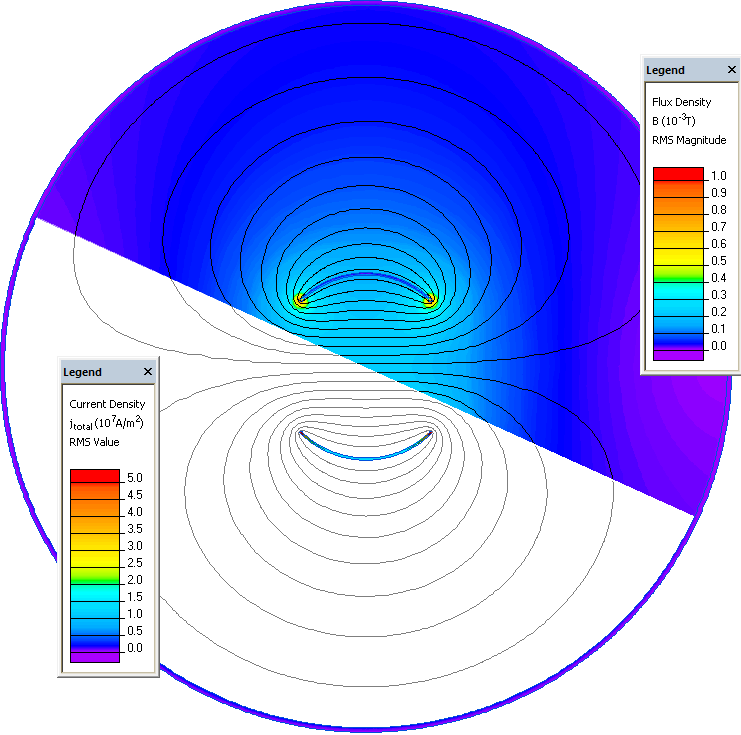Nuclear Magnetic Resonance (NMR) Resonators Probes
QuickField simulation example
A highly successful design in Nuclear Magnetic Resonance (NMR) resonator probe is the so called Slotted Tube Resonator (STR). This design consists of a pair of conducting sheets with a substantial angle ("window angle") sustained on a cylindrical surface. These structures are to resonate at frequencies ranging from 4 MHz to 500 MHz.
Problem Type
Plane-parallel problem of AC magnetics.
Geometry
Solution
Much effort has been devoted to the optimization of the window angle to get the maximum usable space (best field homogeneity) within the conductors. However, there is some discrepancy regarding the ideal window angle to achieve the best homogeneity which is probably due to the inadequate or incomplete approach to the problem. Often, the direct current approximation has been used neglecting the eddy current effects at moderate and high frequencies. Furthermore, the effect of the proximity of the shield has not been fully investigated.
QuickField presents several advantages to approach this problem:
- First, the length of this geometry generally exceeds a couple of times its radius justifying the 2D model.
- Second, the Time-Harmonic Electromagnetic Analysis package allows to solve Maxwell`s equations taking fully into account the eddy currents at moderate and high frequencies.
- Last but not least, QuickField model editor and mesh generator permits simple and fast modification of the problem allowing expeditious optimization of the geometries.
Results
The two problems posted in this page correspond to the widely used 90 degrees window STR for different shield proximities. Calculations have been performed at 26 MHz. It is clear that the proximity of the shield greatly decreases the field homogeneity in the structure. Further optimizations show that the optimal window angle is around 85 degrees.

- View simulation report in PDF
- Download simulation files (files may be viewed using any QuickField Edition).